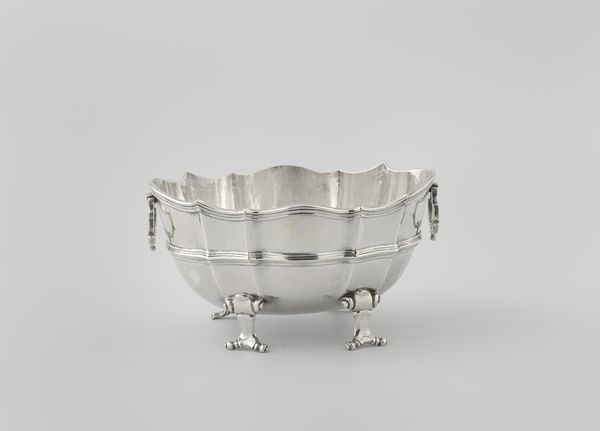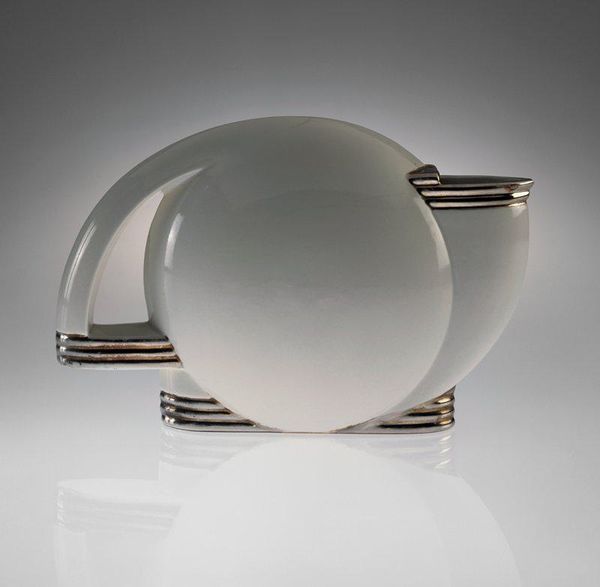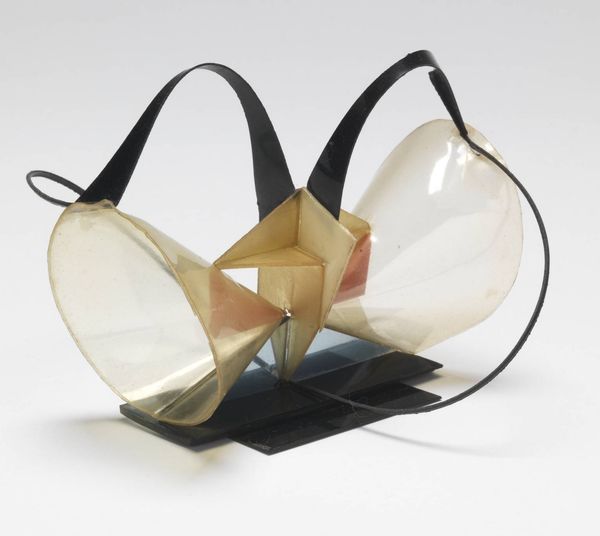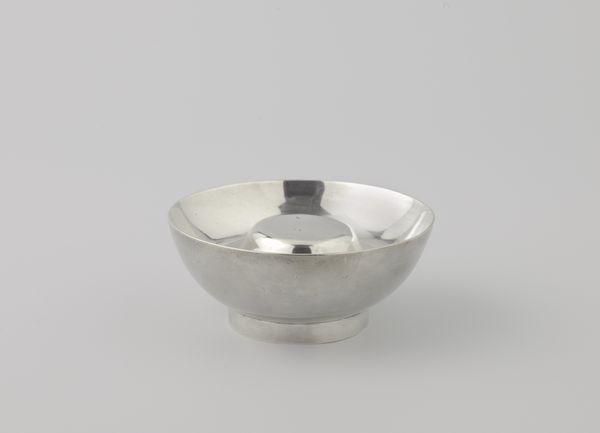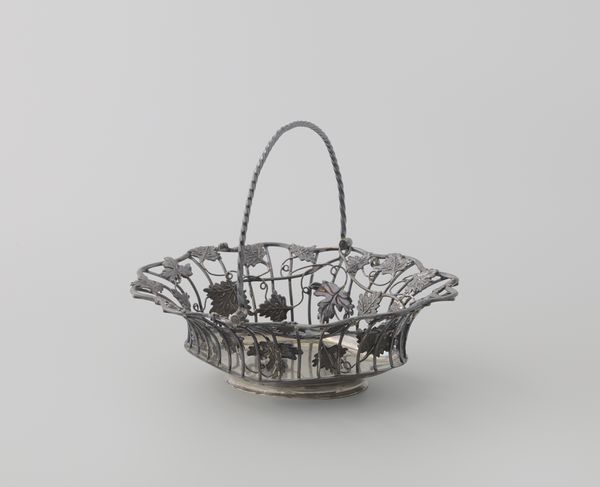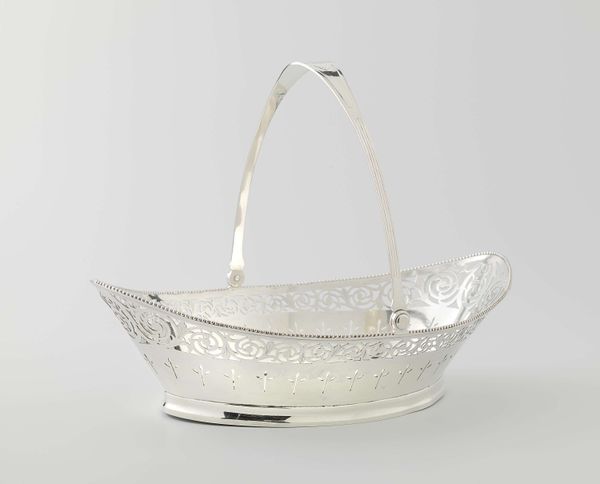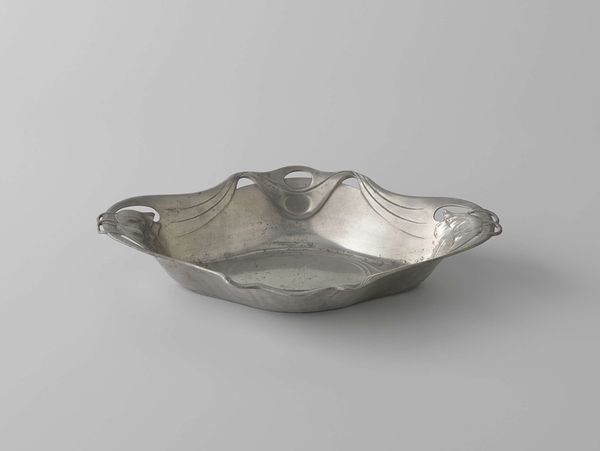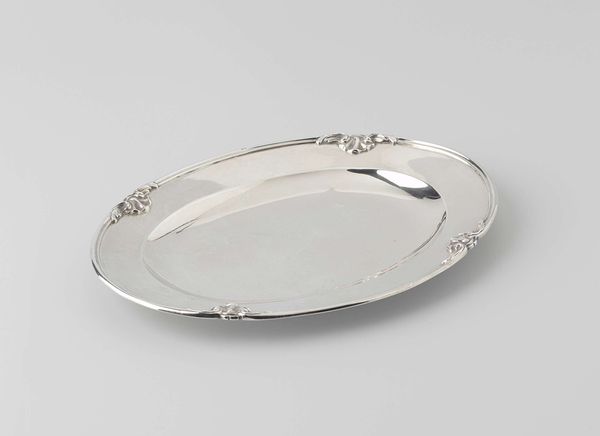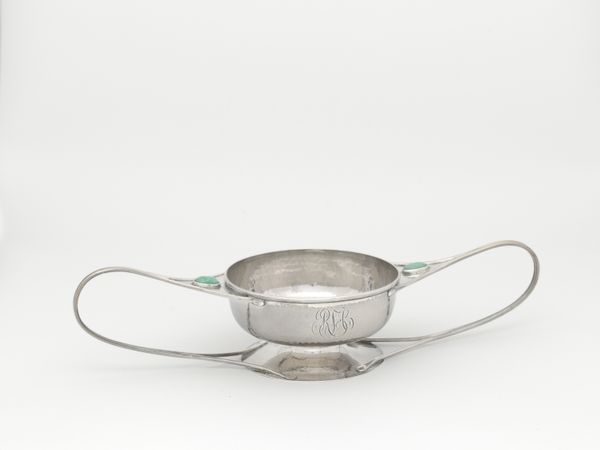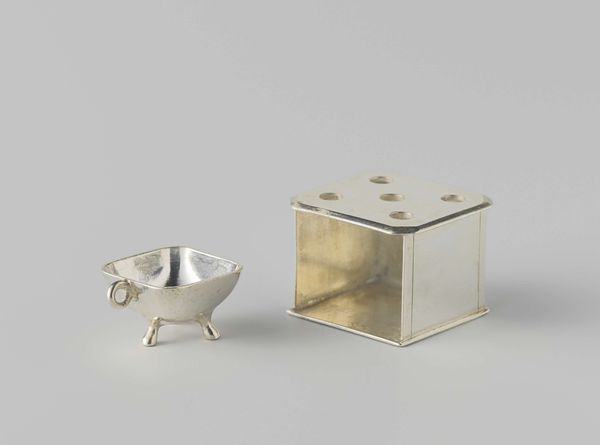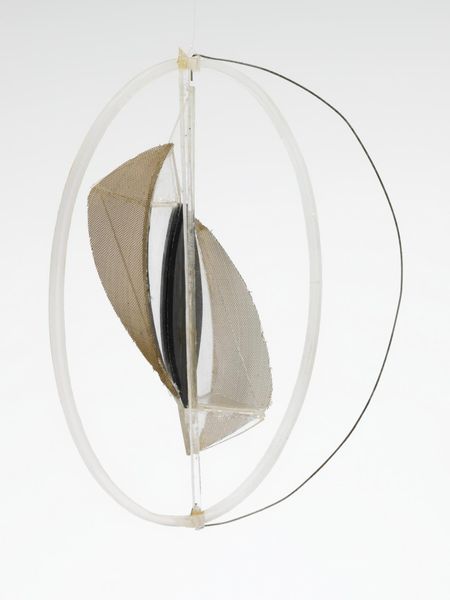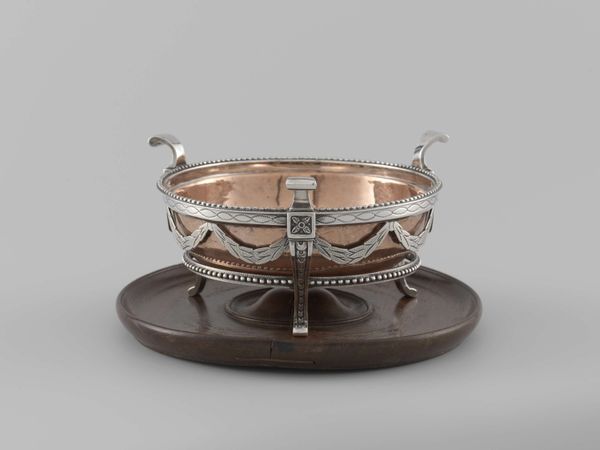
brass, metal, bronze, sculpture
#
neoclacissism
#
brass
#
metal
#
bronze
#
form
#
geometric
#
sculpture
#
decorative-art
Dimensions: height 7.4 cm, width 23.0 cm, depth 23.0 cm, width 22.2 cm, depth 22.2 cm, weight 336 gr
Copyright: Rijks Museum: Open Domain
This brazier was crafted by Cornelis Hendrik Bömcke in the late 18th or early 19th century from copper and silver. These metals are here elevated beyond their typical uses, fashioned into a luxury item intended for the ritualistic burning of aromatic substances. Consider the material properties. Copper is valued for its ability to conduct heat, its malleability, and its reddish-golden hue, while silver is esteemed for its luster and resistance to corrosion. Bömcke has skillfully worked both metals to create a balanced composition. The copper forms the bowl and upper ring, while the silver accents the base and provides support, lifting the brazier gracefully. The making of this object involved a range of specialized skills, from metalworking and silversmithing to polishing and finishing. Its existence speaks to a culture of patronage, where skilled artisans like Bömcke catered to the refined tastes of wealthy clients. Looking at the brazier, we can appreciate the interplay of material, labor, and social context. It reminds us that even the simplest object carries a wealth of cultural meaning.
Comments
rijksmuseum about 2 years ago
⋮
The simple form of this brazier is informed entirely by its function. The copper basin held glowing coals to keep hot the water in the kettle placed on the ring.
Join the conversation
Join millions of artists and users on Artera today and experience the ultimate creative platform.
